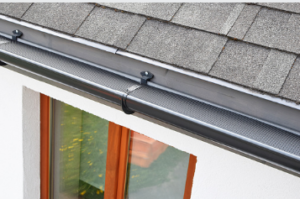Physical therapy is a healthcare profession that assesses, diagnoses, treats and strives to prevent disease and disability through movement and exercise.
Physiotherapists provide services to people of all ages and abilities. They specialise in treating various conditions and injuries and offer general wellness treatments.
Treatment
 Physiotherapists utilise manual therapy, exercise, massage and other techniques to treat physical conditions and injuries. Additionally, they offer advice and information to promote general health, prevent future issues from arising and enhance well-being over the long haul.
Physiotherapists utilise manual therapy, exercise, massage and other techniques to treat physical conditions and injuries. Additionally, they offer advice and information to promote general health, prevent future issues from arising and enhance well-being over the long haul.
Physiotherapists can work in various settings, such as hospitals, rehabilitation centres, or at home. After taking a medical history and physical examination, they will determine which treatments benefit you most.
A www.advanceallied.com/physio-mawson-lakes physio Mawson Lakes physiotherapist can improve your quality of life by relieving pain and stiffness, expediting healing processes and making you more mobile. They may also teach exercises designed to make activities like daily tasks more comfortable so you can continue doing what you enjoy doing most comfortably.
A physiotherapist may utilise ultrasound as another non-invasive therapy to reduce swelling at the site of an injury and boost circulation to damaged tissues.
After an accident or injury, a physiotherapist will assess the damage and collaborate with you to prevent further issues. It may include helping you get up from bed, move around your house, and walk again. Physiotherapists also help avoid complications like pressure sores and falls.
Once a physiotherapist has determined the most beneficial treatment options, they will create an individualised plan tailored to your needs. It may include an exercise routine and other techniques like manual therapy and education on lifestyle habits that can help manage your condition better.
In some instances, your doctor may refer you to a physiotherapist. If you have a health insurance policy, it could cover some of the costs.
Physiotherapists help to enhance the function of many systems within the body, such as nerves, bones and muscles. They can treat issues like chronic diseases or injuries while offering lifestyle advice and providing aids and equipment that make living easier.
Education
In most countries, physiotherapy professionals must obtain at least a bachelor’s degree before being licensed. It typically takes four years and may need additional courses taken before graduation.
Some physiotherapists pursue postgraduate education to advance their practice. Master’s degrees specialise in certain course areas, such as women’s health or sports therapy. Furthermore, there are doctoral programs in physical therapy that can prepare you for a research career.
A bachelor’s degree in physiotherapy is typically provided by a university, usually taking four years to complete. It includes classroom study, laboratory work and clinical experience. Furthermore, taking behavioural sciences, communication, psychology, management, and ethics classes would be best.
The initial year of this program focuses on general sciences. In year two, you’ll gain more in-depth training in physiology and anatomy. Finally, in your third and fourth years, much of your time will be dedicated to clinical placements.
Once your physiotherapy education is complete, you can apply for a residency. While these may be challenging opportunities, they provide invaluable real-world experience. Some residences are short, while others require an ongoing one-year commitment.
Equipment
Physiotherapists employ various equipment, depending on the clinic they are treating. Everyday items used include treadmills, exercise bikes, pedal exercisers and elliptical trainers to ensure patients receive the highest standard of care possible.
Some physiotherapists also have access to aquatic therapy pools, which can benefit many patients. These can aid in an increasing range of motion and relieve pain caused by injuries.
Other physical therapy equipment can include a TENS machine, which alters pain messages sent to your brain. It benefits patients suffering from various discomforts, such as joint, muscle or back issues.
TENS physiotherapy machines work by stimulating nerves, which causes the body to release endorphins that reduce pain and increase circulation. They’re accommodating for people recovering from surgery or injury since it speeds up healing time and boosts the body’s capacity for self-healing.
Another physiotherapy equipment is an ultrasound machine, which produces deep warmth to soft tissue structures in the body. It can also be utilised for rehabilitation from injuries that cause muscle growth and mass loss.
Many therapists also commonly offer massage techniques that can effectively loosen tight muscles. In addition, they may teach you how to perform self-massage using foam rollers or handheld massage guns for added relaxation.
 CRMs can centralise customer information and monitor customer interactions throughout the sales cycle. Furthermore, they offer analytical insights to help dealers tailor their customer sales approaches and boost closing rates.
CRMs can centralise customer information and monitor customer interactions throughout the sales cycle. Furthermore, they offer analytical insights to help dealers tailor their customer sales approaches and boost closing rates. This
This  Consumers are now more time-poor than ever before. They are constantly on the go, juggling work, school, and family activities. As a result, they have a greater need for convenience in their lives.
Consumers are now more time-poor than ever before. They are constantly on the go, juggling work, school, and family activities. As a result, they have a greater need for convenience in their lives. Good asset visibility is essential if your business depends on many assets to run smoothly. Knowing how much equipment, tools and parts are in stock lets your team decide what to purchase or keep and how best to utilise them.
Good asset visibility is essential if your business depends on many assets to run smoothly. Knowing how much equipment, tools and parts are in stock lets your team decide what to purchase or keep and how best to utilise them.